As with the end of February, SPY is currently stalling within an uptrend. The ETF moved above 116 six days ago and has traded on either side of 116.5 the last six days. The pink ovals show periods with a red candlestick, recovery candlestick and a subsequent gain. The recovery candlesticks feature a weak open and strong close. More importantly, these recovery candlesticks set the first support level to watch for a short-term trend reversal.
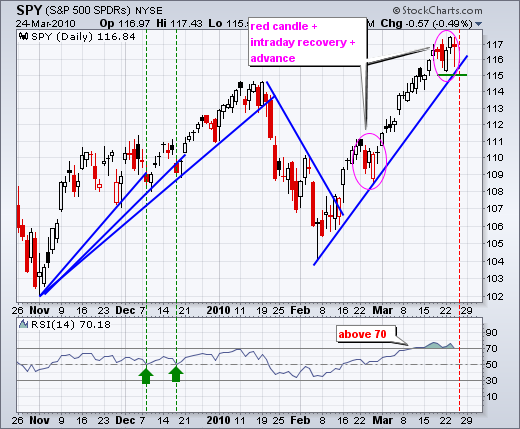

There is no change on the 60-minute chart as SPY remains within a rising price channel (Raff Regression Channel). The upside going has gotten a little tougher as the ETF stalled around 117 the last few days. In fact, 117 marked resistance with the reaction high last week. We have seen stalling and short pullbacks before. Stalling is a signs of equilibrium between buying pressure and selling pressure. It is not the same as weakness. Short pullbacks are the norm for this advance and I will not consider a trend reversal until there is a clear break below 115. RSI remains in bull mode as it holds the 40-50 zone.

Thu - Mar 25 08:30 Initial Claims
Thu - Mar 25 08:30 Natural Gas Inventories
Fri - Mar 26 08:30 GDP
Fri - Mar 26 09:55 Michigan Sentiment
Charts of Interest: ATK, FTO, KWK, MDC, WEN
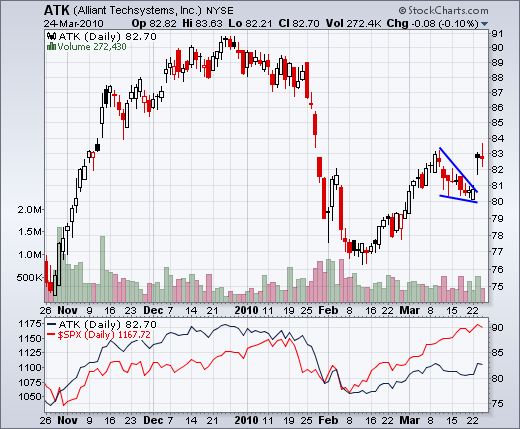
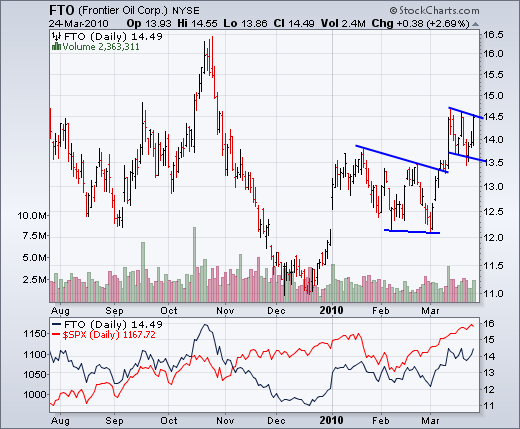
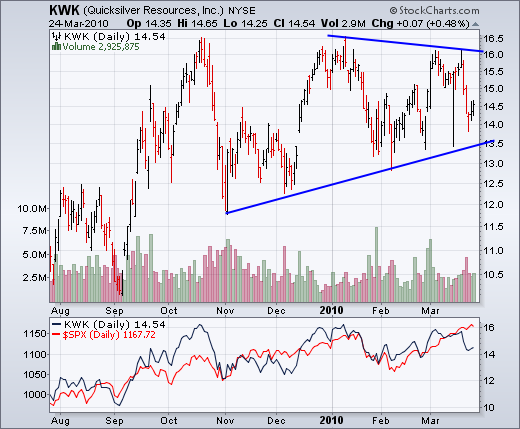

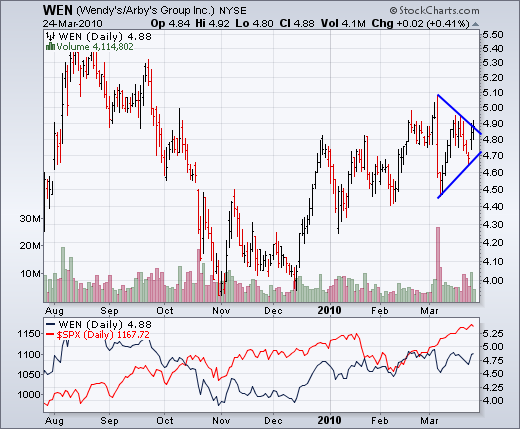
This commentary and charts-of-interest are designed to stimulate thinking. This analysis is not a recommendation to buy, sell, hold or sell short any security (stock ETF or otherwise). We all need to think for ourselves when it comes to trading our own accounts. First, it is the only way to really learn. Second, we are the only ones responsible for our decisions. Think of these charts as food for further analysis. Before making a trade, it is important to have a plan. Plan the trade and trade the plan. Among other things, this includes setting a trigger level, a target area and a stop-loss level. It is also important to plan for three possible price movements: advance, decline or sideways. Have a plan for all three scenarios BEFORE making the trade. Consider possible holding times. And finally, look at overall market conditions and sector/industry performance.

Thu - Mar 25 08:30 Initial Claims
Thu - Mar 25 08:30 Natural Gas Inventories
Fri - Mar 26 08:30 GDP
Fri - Mar 26 09:55 Michigan Sentiment
Charts of Interest: ATK, FTO, KWK, MDC, WEN





This commentary and charts-of-interest are designed to stimulate thinking. This analysis is not a recommendation to buy, sell, hold or sell short any security (stock ETF or otherwise). We all need to think for ourselves when it comes to trading our own accounts. First, it is the only way to really learn. Second, we are the only ones responsible for our decisions. Think of these charts as food for further analysis. Before making a trade, it is important to have a plan. Plan the trade and trade the plan. Among other things, this includes setting a trigger level, a target area and a stop-loss level. It is also important to plan for three possible price movements: advance, decline or sideways. Have a plan for all three scenarios BEFORE making the trade. Consider possible holding times. And finally, look at overall market conditions and sector/industry performance.

About the author:
Arthur Hill, CMT, is the Chief Technical Strategist at TrendInvestorPro.com. Focusing predominantly on US equities and ETFs, his systematic approach of identifying trend, finding signals within the trend, and setting key price levels has made him an esteemed market technician. Arthur has written articles for numerous financial publications including Barrons and Stocks & Commodities Magazine. In addition to his Chartered Market Technician (CMT) designation, he holds an MBA from the Cass Business School at City University in London.
Learn More